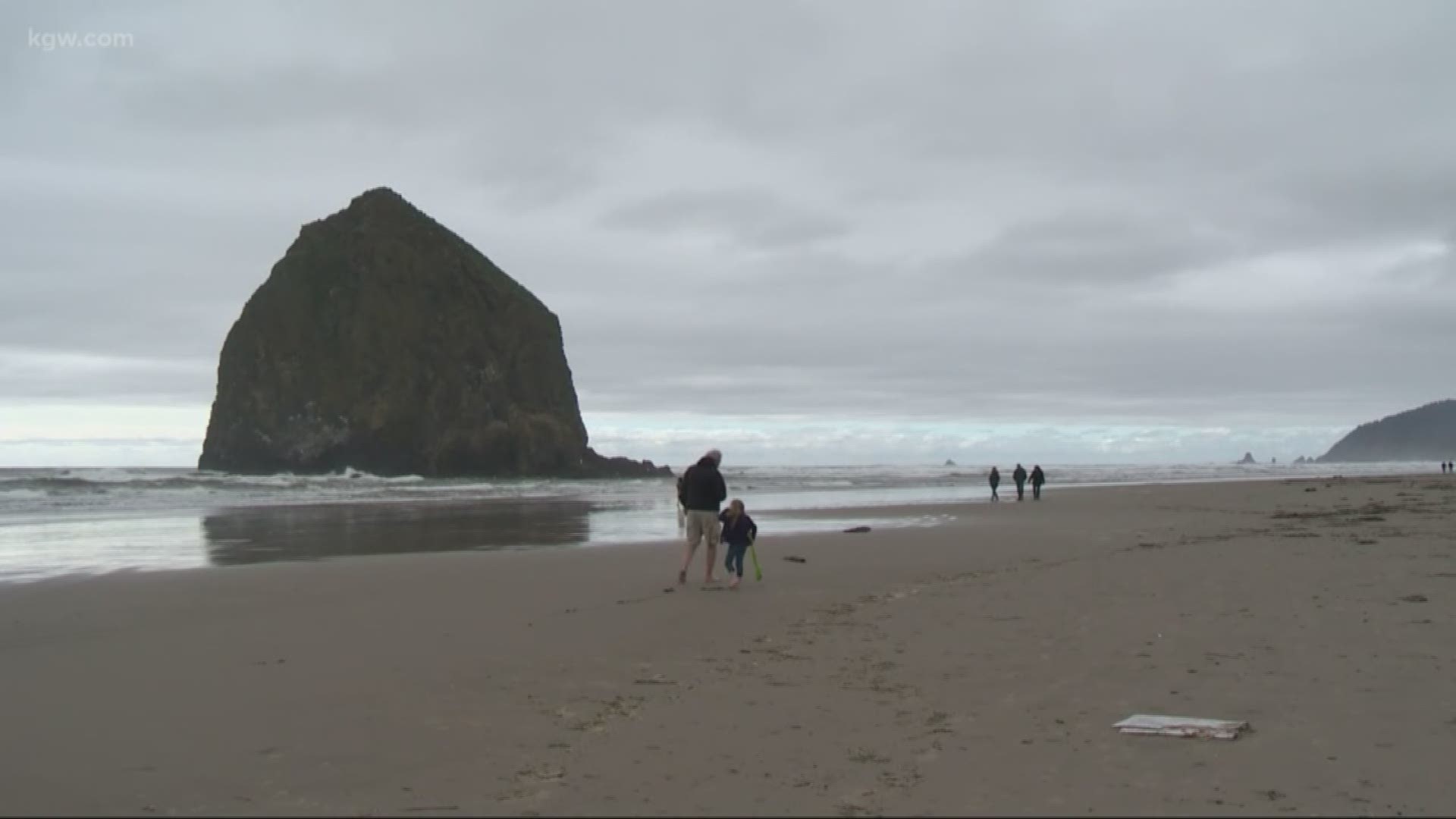CANNON BEACH, Ore. — It's an iconic landmark that brings tourists and locals out to Cannon Beach every single day. But slowly, its face is changing.
While erosion is natural, it's been battering the iconic Haystack Rock in Cannon Beach, eroding the sea stack more rapidly than normal over the past year.
Within the last two years, massive chunks have come crashing down off the rock, changing the main face and northern and southern sides of the rock.
“It was shocking. The sound of the debris, then the birds flying,” said Lisa Habecker with the Haystack Rock Awareness Program.
Geologists estimate the iconic rock will erode completely in about 3,000 years. But Habecker said she hasn’t seen erosion so rapid.
“There’s a rock lying on its side, which is approximately the size of our truck - probably the same tonnage - just shaved off that main face there,” said Habecker, pointing to an area in front of the face of the rock.
Habecker has worked with the Haystack Rock Awareness Program for 17 years, and has watched the landmark change before her eyes. She said she hasn’t seen erosion so rapid, chunks of rock so large, or waves so mighty, as she has the past two years. She and her staff describe a recent event where boulders about three feet wide and three feet tall came crumbling down.
“You can see dark areas in the gullies. That’s continuing to slough off every season,” she said.
The sea stack is protected both federally and at the state level. Multiple government agencies manage the rock, surrounding marine garden and animals who live there. They agree with Habecker. The natural erosion process, caused by weather, wind and waves, is happening more rapidly than normal.
Oregon Fish & Wildlife Refuge Manager Kelly Moroney said the agency promotes natural processes like erosion. Because the rock is federally protected as a wildlife refuge, there are limitations as to what the government and environmentalists can do.
Moroney says they haven't measured the rate at which the rock is eroding, but they are planning to this year in order to determine if erosion will accelerate or if this is rare.
Habecker worries about losing protected wildlife habitat, and rocks toppling and injuring people.
“For me, it’s a safety issue and I worry about our nesting sea birds,” she said. "Are we losing that habitat? Are we going to lose people? These are all things that go through our heads every single day. It's like what do we do?"
Volunteers and staff will rope off areas temporarily on a case-by-case basis to protect the invertebrates, nesting birds and visitors.
“Why are we concerned that it's going to be gone in 3,000 years when we need to be concerned about the here and now?” Habecker asked.
She says erosion is a natural process and we can't stop it. Habecker says people must focus on being good stewards and preservationists to protect what we have right now in our environment, so generations to come can enjoy it.
Visitors we spoke with in Cannon Beach today made the trek Tuesday to enjoy the coast and admire the landmark. They prefer this coast line because of Haystack Rock and the size of the waves.
"It's sad to see that's happening to it. I can definitely see it when I look at it, didn't realize it was erosion though," Harrison LeSage, who lives in Portland, said.
"It's hard to imagine something that big being gone. But it's what happens," said Jacob Winters, who was visiting from Seattle with his wife. "It seems like so far off but seems like a really sad thing to have gone such an iconic thing."

